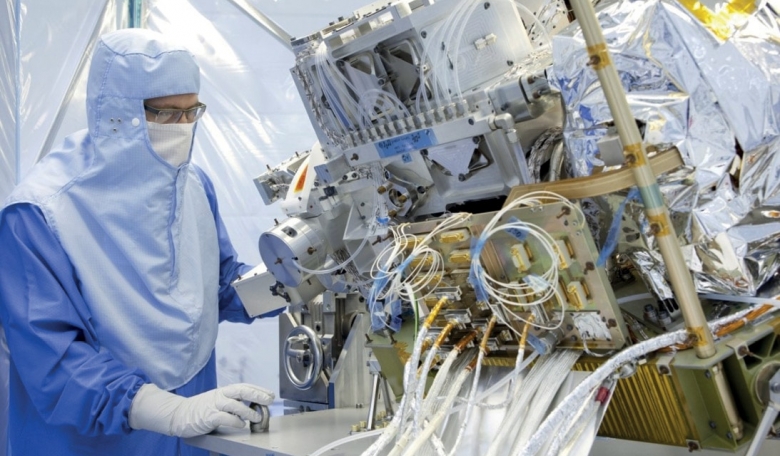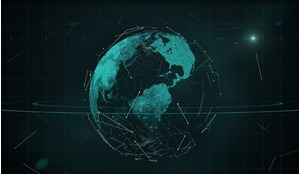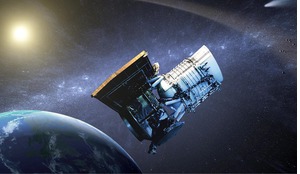A new European spacecraft scheduled to be launched by a Russian Rockot from the Plesetsk Cosmodrome late this autumn promises to be the most advanced ever satellite system for monitoring the state of our planet. Sentinel-5P, which will make global maps of gases and particles in the atmosphere to track pollution and climate change, carries a single sensor known as TROPOMI, a four-in-one spectrometer that is capable of distinguishing a range of chemical species in the atmosphere that are associated with pollution. These include nitrogen dioxide and sulphur dioxide, which are emissions from fossil-fuel burning. TROPOMI will also monitor ozone - both the ‘good’ version of the gas that sits high in the atmosphere and protects us from harmful ultraviolet radiation; and the ‘bad’ ozone that forms at ground level and causes respiratory irritation in vulnerable inpiduals.
Sentinel-5P (S5P) is part of the Copernicus global monitoring programme, a joint venture between the European Commission (EC) and the European Space Agency (ESA). The ‘P’ in the spacecraft’s name stands for Precursor and references the fact that the instrument comes before a near-identical sensor that will eventually fly on Europe’s next-generation weather satellites from 2021.
This air quality and atmospheric chemistry mission, jointly developed by the ESA and the Netherlands Space Office (NSO), forms part of a joint EC-ESA undertaking which aims to acquire continuous and accurate Earth observation data to improve the management of the environment, understand and mitigate the effects of climate change and support civil security.
A key objective will be to ensure data continuity from the Ozone Monitoring Instrument (OMI) on board the NASA’s Aura satellite, for the supply of air quality data in the lower troposphere. It will also act as a gap filler in atmospheric chemistry observations between the SCHIAMACHY instrument of the now-defunct European Envisat spacecraft and the Sentinel-5 instrument, which will be part of the payload suites on the second generation of meteorological operational satellites (MetOp-SG) but not launched until 2021.
The S5P mission consists of a single satellite carrying the sole instrument TROPOMI. The instrument development was financed in a large part by the Dutch government (UV-Vis-NIR module development, instrument development management, calibration and ground data processing), and executed by a consortium led by Airbus Defence and Space Netherlands (formerly Dutch Space), with the Dutch national weather service (KNMI), the Netherlands Institute for Space Research (SRON) and the Netherlands Organisation for applied scientific research (TNO) as major partners.
Find out more about Sentinel-5P satellite system and the TROPOMI sensor in the full version of this article, available now to our subscribers.














